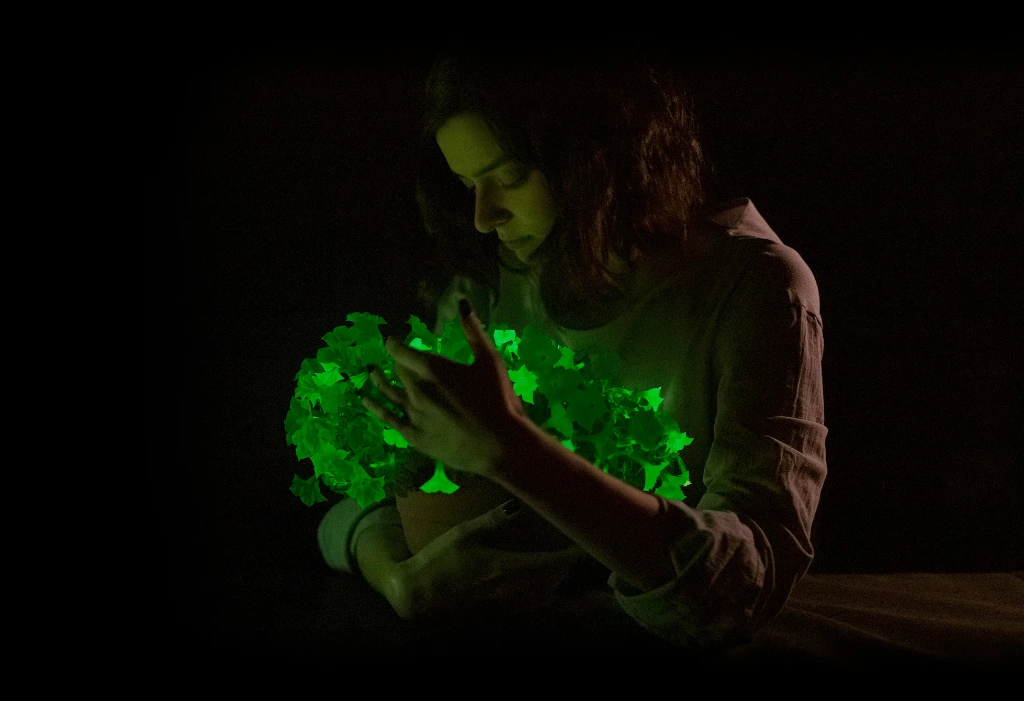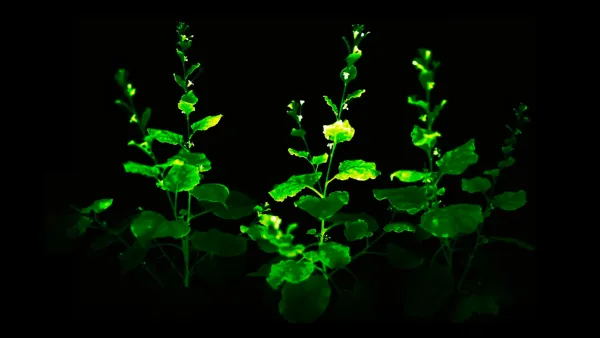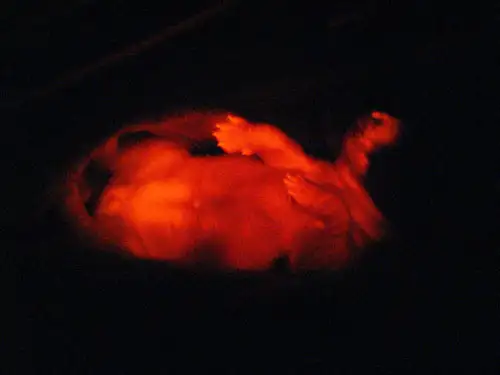You will soon be able to buy glow-in-the-dark plants

Even if they don’t occur naturally, bioluminescent plants are nothing new, they have been created by humans since 1986, when UC San Diego scientists first inserted genes from fireflies into tobacco plants, creating the first glowing plant. However, until now, they have never been commercially available.
Now all that is about to change because, from April 2024, anyone will be able to buy their own bioluminescent plant for a mere $29 (plus $24 shipping). Light Bio, a biotech firm based in Idaho, will be selling genetically modified glow-in-the-dark petunias to consumers in the United States.

Thanks to a safe-ruling by the USDA in 2023, these strange other-worldly plants could soon be a part of your average home. In September they were deemed safe to breed and grow. They are created by inserting genes from bioluminescent mushrooms into petunias and in the dark they emit a soft green glow. Customers will be able to buy this glow-in-the-dark plant through their website and Light Bio is already accepting orders for the first 50,000 “Firefly Petunias”.
“This milestone — and the magical experience we are bringing to people across the country — has been decades in the making … We can’t wait to see their reactions and to discover the bright future ahead for this incredible technology,”
Keith Wood, Light Bio CEO
Do glow-in-the-dark plants need special treatment?
No, according to Light Bio, the plant can be treated just like any other houseplant. Just like normal petunias, it is easy to care for, it just needs water and at least 6 hours of sunlight. The plant can be grown in pots, baskets or gardens and will reach a height of 6-inches and produce white flowers. New leaves will glow brighter than older leaves and parts of the leaves that are damaged glow brightly, the flowers glow the brightest.
Petunias are technically perennials, meaning they will grow back each year, but this would be in their warm native climate of south America. In colder climates they are used outside as annuals and will die of the cold in the winter. So, if you want to get your money’s worth, keep it in a warm sunny spot inside and it could last much longer than a year. Just make sure you look after it because the healthier it is, the brighter it will glow.
The company compares the soft glow that the plant emits to moonlight, and suggests that the plants could be used to induce a sense of tranquillity in the evening and would be good for creating a relaxing atmosphere for meditation.
It’s a living example of the marvels of scientific achievement.
Light Bio website

Glow-in-the dark Christmas trees and other possible future uses
Scientists are working on ramping up the brightness of the bioluminescent plants and envisage many possible uses of glow-in-the-dark plants in the future. One idea is to create bioluminescent Christmas trees that are self-illuminating, no need for lights! Another idea is to have glowing plants or trees instead of street lamps. No need for power, just plant and glow!
Other more scientific uses are also being investigated, e.g. you can use the plants as a way to measure toxins in water; the more toxins in the water, the lower the brightness of the plant. The glow-in-the-dark plants will also be useful to scientists to visualise the expression of certain genes in plants.
Glow-in-the-dark kittens, puppies and sheep
Fluorescent kitty

A glowing kitten, created by scientists from the Mayo Clinic, was genetically modified to resist a virus similar to HIV that affects cats. The researchers inserted a special gene into cat embryos, along with a green fluorescent protein gene to help track the modification. This allowed them to observe how the resistance gene developed in the cats’ bodies. The modified cats appeared normal during the day but could emit a faint glow at night.
However, even normal cats glow under UV light, as do many mammals including bats, platypus, koalas, polar bears, zebras, dolphins and humans.
Glowing puppy

Similarly, in 2009, inserted a red fluorescent gene from sea anemones into beagles. This gene caused the dogs to emit a red glow in daytime, which intensified to a bright orange hue in the dark. These healthy dogs later gave birth to fluorescent offspring, demonstrating the feasibility of transgenic animal research.
Later, a beagle named Tegon was bred with a controllable fluorescent gene. When Tegon ate food containing antibiotics and was exposed to ultraviolet light, it emitted a green glow. This innovative approach might help associated with debilitating human diseases like Alzheimer’s and Parkinson’s, showcasing the potential of transgenic animals for medical research.
Shining sheepy

Uruguay’s Institute of Animal Reproduction recently made history by creating the world’s first glow-in-the-dark sheep. Using a gene from a jellyfish, they modified nine sheep, causing them to emit a green glow under ultraviolet light. Led by Dr. Alejo Menchaca, the team aimed to refine the technique for future research on animal and human diseases. This breakthrough could lead to exciting advancements in various fields, including fashion.
GloFish® have escaped into the wild

GloFish were the first genetically modified glow-in-the-dark animals to be commercially available. In 2003 they were made legal in the USA (everywhere except California). They are illegal in the UK.
They are also illegal in Brazil. But in Brazil’s Atlantic Forest, genetically modified zebrafish known as GloFish have been discovered breeding in creeks. Despite being banned since 2017, they are still sold to aquarium aficionados on the black market.
These fish, engineered to fluoresce, pose a risk to native species by competing for resources and potentially driving them to extinction. Brazilian biologists urge measures to prevent their escape from fish farms into local waterways. However, a U.S. biologist criticizes the study, arguing that GloFish fail to compete effectively against wild-type zebrafish. Despite the controversy, concerns persist about the ecological impact of genetically modified fish in fragile ecosystems like the Atlantic Forest. Measures such as installing nets at fish farms and promoting the breeding of native species are recommended to mitigate this risk.
Useful links about Bioluminescent Plants and Animals
Living Light: Is There a Future For Bioluminescence Technology?
Scientists create glowing plants using mushroom genes – The Guardian
Meet the world’s first glow-in-the-dark sheep – news.com.au
Fluorescent puppy is world’s first transgenic dog – New Scientist
7 genetically modified animals that glow in the dark – The Week
https://en.wikipedia.org/wiki/GloFish
GM fish engineered to glow in the dark are found in Brazil creeks – Mongabay News
Light Bio – Firefly Petunia: the flower you will love the most
Bioluminescent plants don’t exist in nature — but you can buy one for $29 – Freethink






